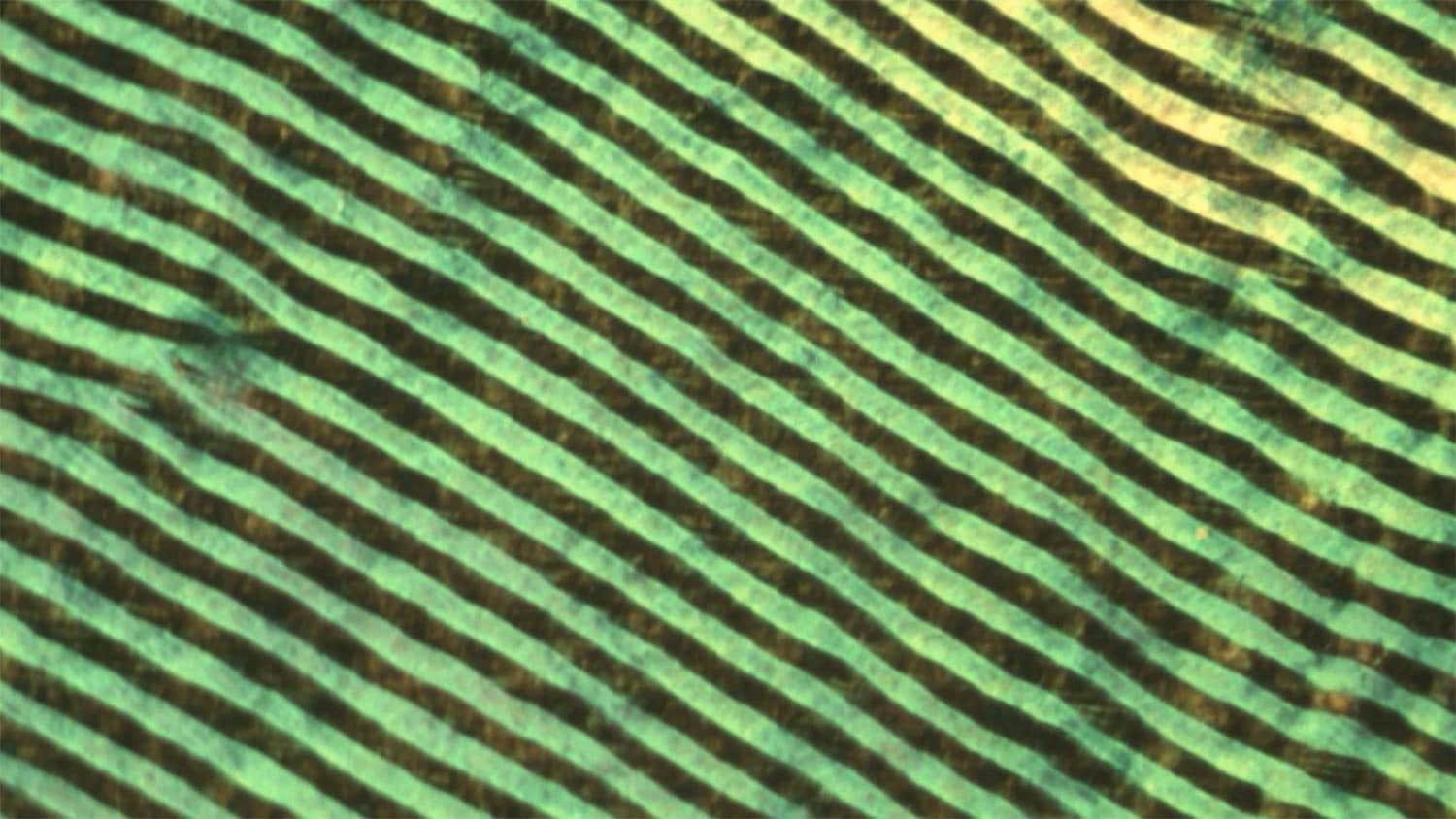Researchers have successfully measured the amount of charge generated in spin-to-charge conversion within a spintronic material at ambient temperature, thanks to a printable organic polymer that prints into chiral configurations. The polymer’s adjustable properties and adaptability make it appealing for use in understanding chirality and spin interactions more broadly, as well as for less costly, environmentally friendly, printed electronic applications.
 Solution-printed chiral assemblies of semiconducting polymer thin films. Image Credit: Kyung Sun Park, University of Illinois Urbana Champaign
Solution-printed chiral assemblies of semiconducting polymer thin films. Image Credit: Kyung Sun Park, University of Illinois Urbana Champaign
Electronic devices known as spintronics employ an electron’s spin rather than its charge to produce an energy-efficient current that is used for computing, data storage, and communication.
Materials that cannot be imposed on their mirror counterpart are called chiral materials.
The “chirality-induced spin selectivity (CISS)” phenomenon in spintronic materials gives designers control over the direction of spin within the material. The charge-to-spin conversion (CISS) effect is the result of charge current flowing down a chiral axis in a chiral material. This process produces spin without the need for ferromagnetic components. In computing devices, charge-to-spin conversion is required for memory storage.
We know that CISS-driven charge-to-spin conversion works efficiently in chiral semiconductors, but we want to know why. And an easy way to understand the puzzling mechanics of such a process is to reverse it, that is, to look at spin-to-charge conversion via the inverse CISS effect.
Dali Sun, Study Co-Corresponding Author, Associate Professor of Physics and member of the Organic and Carbon Electronics Lab, North Carolina State University
Co-corresponding author of the study and associate professor of chemical and biomolecular engineering at the University of Illinois Urbana-Champaign, Ying Diao, collaborated with Sun to develop printing procedures for conjugate organic polymer assembly into chiral helical structures.
Organic materials can transport spin over long distances, but they aren’t good at converting spin to charge, which is necessary for spintronic devices. By making the structure of this material chiral we can leverage it to convert between spin and charge.
Ying Diao, Study Co-Corresponding Author and Associate Professor, University of Illinois Urbana-Champaign
Sun added, “The CISS effect is created by putting a charge into a chiral spintronic device, but figuring out how efficiently the charge is converted to spin within the device is very challenging because it is hard to measure the produced spin in a quantitative way. The inverse chirality-induced spin selectivity effect, or ICISS, where you put spin into the device and measure the resulting current, has not been studied in organic polymers. But it is a lot easier to measure current than spin. So that is what we did.”
Sun injected pure spin into the organic polymer using microwave excitation as a spin-pumping method and measured the resulting current.
Unlike the picosecond lifetimes reported in conventional spintronic materials, the researchers discovered that chiral organic polymers could achieve spin lifetimes of up to nanoseconds at room temperature.
Sun stated, “The beauty of this material – among other things – is its tunability. We can change chirality, conductivity, and see how that affects spin or efficiency. We now have a way to really gain insight into why CISS-related spintronic devices work, which could help us design better and more efficient ones.”
“Polymer-based electronics are much less energy-intensive to fabricate than current electronics, and are easy to scale up for production. Since polymer semiconductors are printable – they can be printed in the same way newspapers are – they would be ideal for portable, flexible and stretchable applications ranging from solar cells to new forms of computers,” Diao noted.
The study, which can be found in Nature Materials, is funded by the US Air Force, the Department of Energy, the National Science Foundation, the Office of Naval Research, the Air Force Office of Scientific Research, and the Multidisciplinary University Research Initiatives (MURI) Program under award number FA9550-23-1-0311.
The study’s co-first authors are Kyung Sun Park of Urbana-Champaign and Rui Sun of ORaCEL. The study was further supported by Peng Zhang, David Beratan, Andrew H. Comstock, and Aeron McConnell of NC State; Yen-Chi Chen and Axel Hoffmann of the University of Illinois Urbana-Champaign; Wei You of UNC-Chapel Hill; and Zhi-Gang Yu of Washington State University.
Journal Reference:
Sun, R., et. al. (2024) Inverse chirality-induced spin selectivity effect in chiral assemblies of π-conjugated polymers. Nature Materials. doi:10.1038/s41563-024-01838-8